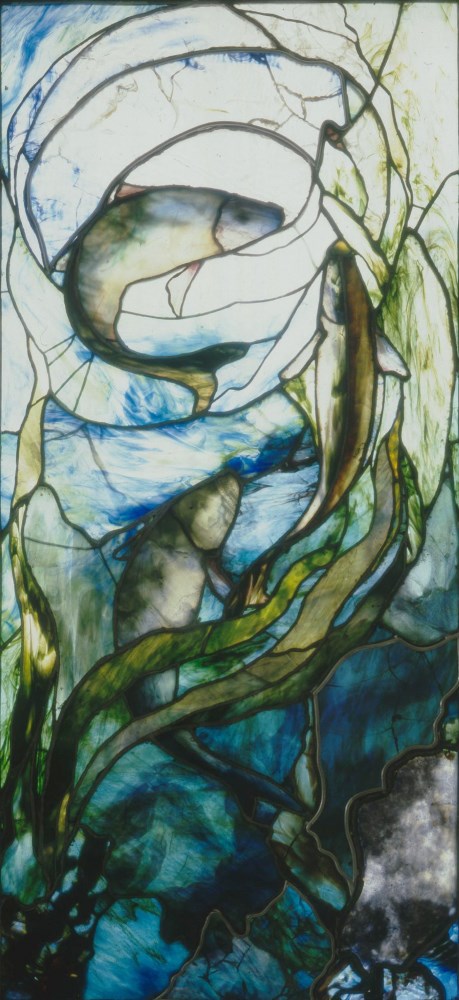Description:
Louis Comfort Tiffany (1848-1933) was a renowned American painter and designer of applied art. His father was the famous New York goldsmith Charles Louis, and the first painting teacher who sensitized him to the beauty of nature, the main theme of his creativity, the landscape painter George Inness. From 1868 he continued his studies in Paris, visited Spain and North Africa, as well as became acquainted with Romanesque art and Islamic art. Upon his return to the United States in the early 70s of the 19th century, this resulted in works on Oriental themes and the collection of utilitarian art of the Far East and Islam created by him. In 1878, together with several colleagues, he established the American Art Association, aimed at disseminating modern trends in European painting.
Since the establishment of the Louis C.Tiffany Company & Associeted Artists in 1879, the artist has mainly devoted himself to decorative art, translating his previous experiences and fascinations into the theme and painting approach of the produced items, including primarily stained glass. It was these that brought him the greatest fame as glazing of windows, interior decorations, but also stained glass lamps. Made from 1900 onwards, mostly in the large Tiffany Studios, over almost half a century of activity, they have found their way into buildings in North America, Australia and Europe, particularly England and France.
He owed his success to a groundbreaking approach to this traditional technique, which he revolutionized in terms of the glass itself, metal frames and the previously unknown layered joining of panes, which allowed for a three-dimensional effect.
This is particularly visible in the Rogalin stain glass window, where we not only find his invented multicolored opalescent glass (so-called Favrile Glass), but also the concept of giving each element a different texture and thickness, and joining them with metal welds which, when shaped plastically, became an equal component of the composition. As a result, we have the impression of looking at the titular Carp in the depths of the pond with almost undulating seaweed through which distant light penetrates.
Magdalena Weber-Faulhaber suggests that the inspiration for this stained glass window may be the motif from the Fukusa, a Japanese silk decorative fabric from Siegfried Bing’s collection (currently in the Musée des Arts Décoratifs in Paris). This is quite likely in light of Tiffany’s contacts with Bing, who was fascinated by his art and in 1895 ordered 13 stained glass windows from him based on the designs of his associates, including Henri Ibels and Toulouse-Lautrec, for his Paris gallery “Art Nouveau”. This Parisian marchand was also Tiffany’s representative in Europe and the owner of many of his works, which he also exhibited outside his gallery. In 1899, for example, in the Grafton Galleries in London he exhibited the stained glass Deep See (from 1897) and the very similar Rogalin Carp, which by 1905 were already owned by the Raczyński. Thus, it is likely that they arrived in Rogalin from Paris in 1900 from Bing’s collection auction or from the World Exhibition in Paris. The latter also presented the aforementioned stained glass Deep See, which was designed and made by Tiffany himself and came from his residence and studio Laurelton Hall on Long Island in New York (currently in the Tiffany Museum in Nagoya, Japan). M. Weber-Faulhaber suggests that perhaps the two stained glass windows were originally a pair and came from Laurelton Hall.


